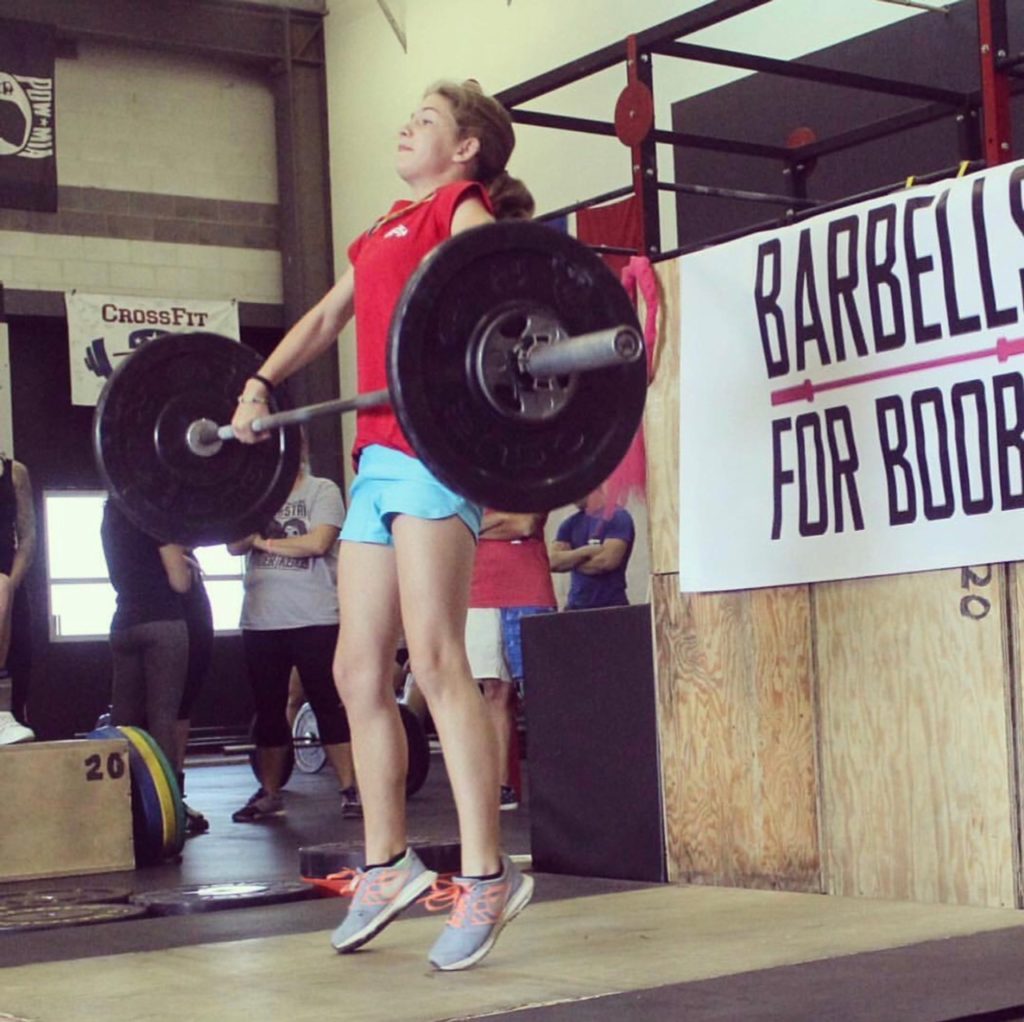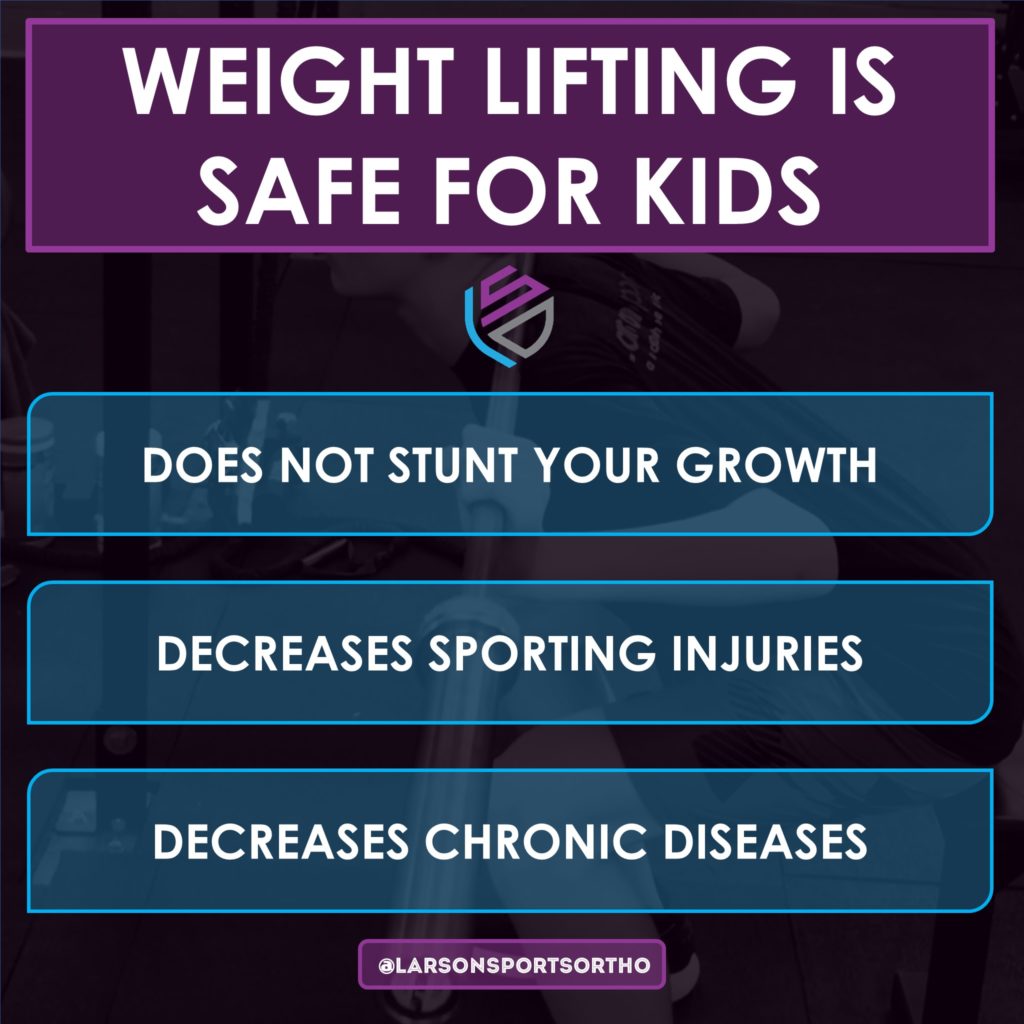Is Weightlifting Safe for Kids?
This is a common question we get all the time. Every parent wants the best for their kid. And they want them to have success in athletics. But many people worry that adding weight training to their child’s sports routine might be too much. Are you pushing your kid too hard? Or are you doing what’s best for them? Should children lift weights?
A lot of concerns are based on outdated ideas and misinformation. When I was growing up, as I’m sure was the case for many of our readers, we were told weightlifting wasn’t safe for kids. We were told it would stunt your growth or cause injuries. And since kids couldn’t really bulk up their muscles there was no point in it anyway.
But nothing could be further from the truth. Today, we know that not only is weightlifting safe for kids of all ages but it’s quite beneficial for them as well.
Can Weightlifting Stunt Kids’ Growth?
Simple Answer: No. There is no evidence that weightlifting stunts your growth. No research has ever found any correlation between weightlifting as a child or adolescent and decreased growth rates.
However, there is plenty of evidence that, when a weightlifting program is performed under the guidance of strength and conditioning coaches, it improves neuromuscular development. This, in turn, can actually decrease injury rates while playing other sports.
Admittedly, the goals of weightlifting are different for children than adults. With kids, the goals include improving strength, endurance, balance, speed, and reflexes. The goals before puberty should NOT focus on increasing muscle size or hitting single rep max lifts.

Can Kids Be Injured While Weightlifting?
Sure. But kids can and do get injured with all sports and free-play. As a matter of fact, monkey bars were the greatest cause of fractures during my entire stint at Children’s Hospital in Pittsburgh. I used to joke about spending my few hours out of the hospital cutting down monkey bars all over Allegheny County, so I would have to deal with fewer broken arms when I was in the hospital on call!
Overall, the risk of injury for weight training is approximately 1 injury per every 1000 hours of training. And these are typically minor injuries such as muscular pain which goes away within a week. There are very few major injuries ever reported with supervised strength and conditioning programs in children and adolescents.
But in comparison, estimates of injuries for organized sports such as football, cross country, soccer, and basketball can average anywhere from 5-16 or even higher per 1000 hours of training.
When you take into account the fact that strength training has been shown to decrease rates of injuries in other sports, it turns out that weight training is one of the safest athletic activities that children and adolescents can do.
In one study of elite youth soccer players, those kids that did 2 to 3 weight lifting sessions a week had ⅓ the number of injuries as did peers who only did their usual soccer practice!
What Do Experts Say About Kids and Weightlifting?
This has changed a lot over the years. In the last 30 years, science has shown a significant benefit to strength training for kids. In fact, many groups that used to oppose weight training in kids now fully endorse it!
The groups that now recommend strength training as part of a youth activity program include sports medicine physicians, orthopedic surgeons, pediatricians, exercise physiologists, and the National Strength and Conditioning organizations.
One of the main reasons the experts recommend weight training for kids is the low rates of injuries. But there is also the fact that strength training decreases the risks of both overuse injuries and acute athletic injuries across the spectrum of young athletes.
At What Age Can Kids Lift Weights?
Experts usually recommend that it is safe to start weight lifting as early as 7 or 8 years old. This is about the earliest that you can expect your kids to have to motor control and attention span to learn proper form and technique. And many fitness facilities now offer classes for kids in elementary school.
Of course, this doesn’t mean you should drop your second grader off at the gym and come pick them up a couple hours later. First of all, they’ll probably pick up a nasty Monster beverage habit and start calling you “Bro” all the time. Secondly, weight lifting for kids should always be supervised by an expert in the field. Find an ATC, PT, or CSCS in your area that runs youth programs and enroll your child.
In our town, I’m the medical director for the Blue Ridge Volleyball Association. And we’ve partnered with PRO Motion to provide directed strength training programs for all of our athletes. These types of partnerships can help reduce that chances of ankle sprains, ACL injuries, and more.

Are There Risks with Weightlifting for Kids?
Of course. There are risks with any athletic activity whether you’re a child or adult. However, in most cases, sports specialization and over-training presents the greatest risk in young athletes. By mixing in supervised strength training as part of the overall exercise program for kids, we find the risk of chronic injuries from overtraining is significantly reduced.
The most recent recommendations for prevention of overuse injuries in young athletes includes dedication to a single sport for no more than 8 months out of the year, keeping the time spent practicing to a number of hours less than the child’s age in years each week, and playing more than one sport in order to avoid overtraining specific muscle groups and joints.
Coaches’ Corner with Jess:
There are a few things to consider when programming weightlifting exercises for kids and teens. Kids should start with body weight exercises such as air squats, push-ups, and pull-ups. When they demonstrate good form and strength in these movements, you can then introduce weights.
Proper technique is the number one priority for kids when weightlifting. Kids who are still growing should not be following the same types of training cycles as adults or older teens. Instead, consider a progressive, linear overload cycle. For kids, the “overload” is not failure to lift the weight, but rather when their form breaks down.
Also remember that kids are growing constantly, especially as they near puberty. They need supervision to make sure that technique is maintained despite ever-changing limb-lengths and temporary decrease in coordination!
Don’t look to the Junior Olympics as your guide for these kids. The incredible numbers those young hopefuls toss around is not a great example when programming for overall health and long-term performance. Like any sports specialization, it has its own set of risks and rewards. That kind of aggressive training can put kids at an increased risk of injury when weightlifting, but these kids are accepting those risks for the international stage pay-off.
If your athletes’ goals are to cross-train and improve their performance in a different sport then keep their training slow, steady, and technique-focused. This will make the most improvements on the field and in daily life!
Works Cited
Caine, D, et al. “Incidence and Distribution of Pediatric Sport-Related Injuries.” Current Neurology and Neuroscience Reports. Nov. 2006
Faigenbaum. “Resistance Training among Young Athletes: Safety, Efficacy and Injury Prevention Effects.” BJSM Jan. 2010
Myer, G D, et al. “Sports Specialization, Part II: Alternative Solutions to Early Sport Specialization in Youth Athletes.” Sports Health. 2016
Walters, B K, et al. “The Effects of Resistance Training, Overtraining, and Early Specialization on Youth Athlete Injury and Development.” J Sports Med Phys Fitness. 2018 Sep
Zwolski, C, et al. “Resistance Training in Youth: Laying the Foundation for Injury Prevention and Physical Literacy.” Sports Health. 2017

